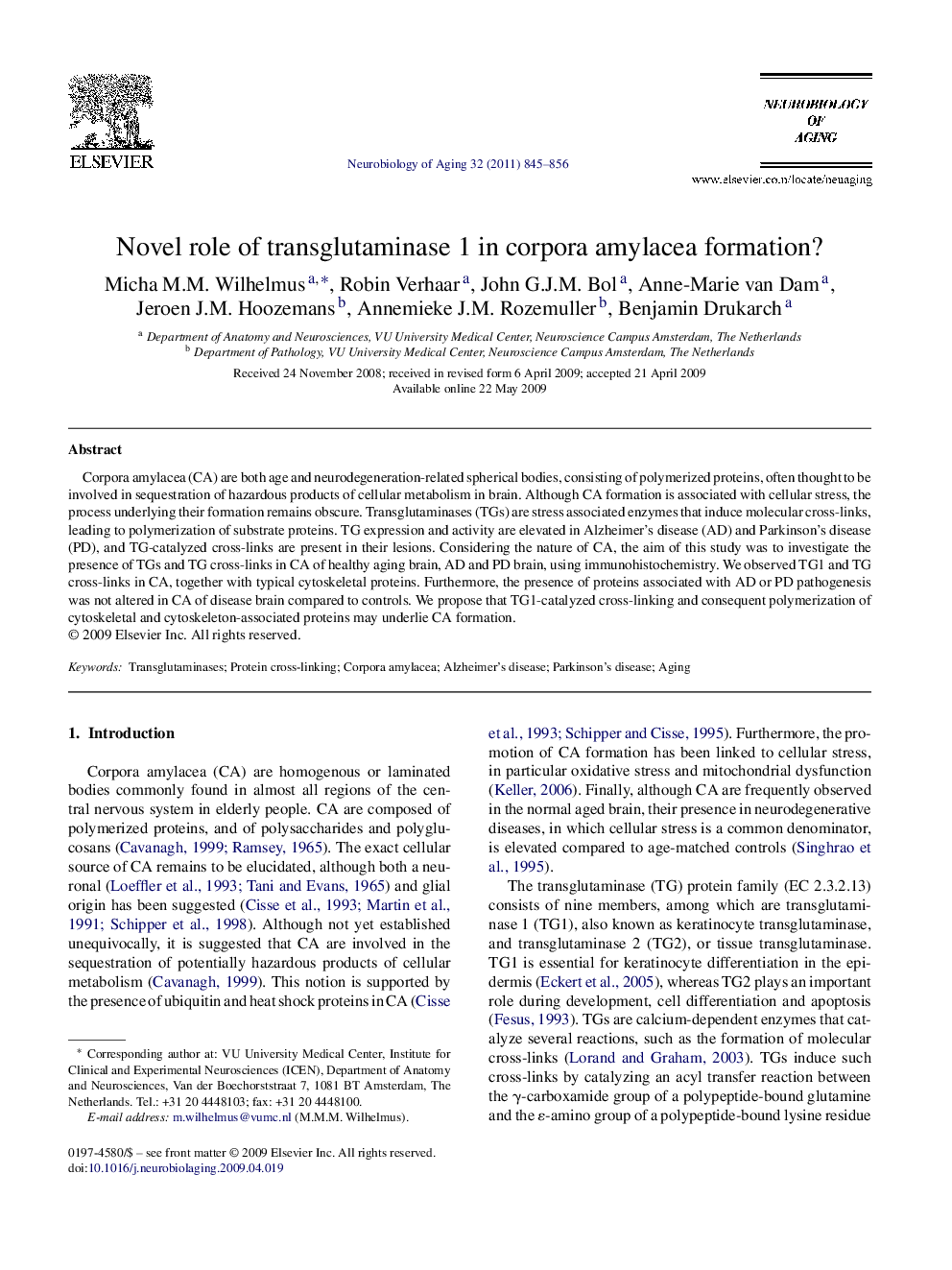| Article ID | Journal | Published Year | Pages | File Type |
|---|---|---|---|---|
| 330838 | Neurobiology of Aging | 2011 | 12 Pages |
Corpora amylacea (CA) are both age and neurodegeneration-related spherical bodies, consisting of polymerized proteins, often thought to be involved in sequestration of hazardous products of cellular metabolism in brain. Although CA formation is associated with cellular stress, the process underlying their formation remains obscure. Transglutaminases (TGs) are stress associated enzymes that induce molecular cross-links, leading to polymerization of substrate proteins. TG expression and activity are elevated in Alzheimer's disease (AD) and Parkinson's disease (PD), and TG-catalyzed cross-links are present in their lesions. Considering the nature of CA, the aim of this study was to investigate the presence of TGs and TG cross-links in CA of healthy aging brain, AD and PD brain, using immunohistochemistry. We observed TG1 and TG cross-links in CA, together with typical cytoskeletal proteins. Furthermore, the presence of proteins associated with AD or PD pathogenesis was not altered in CA of disease brain compared to controls. We propose that TG1-catalyzed cross-linking and consequent polymerization of cytoskeletal and cytoskeleton-associated proteins may underlie CA formation.
